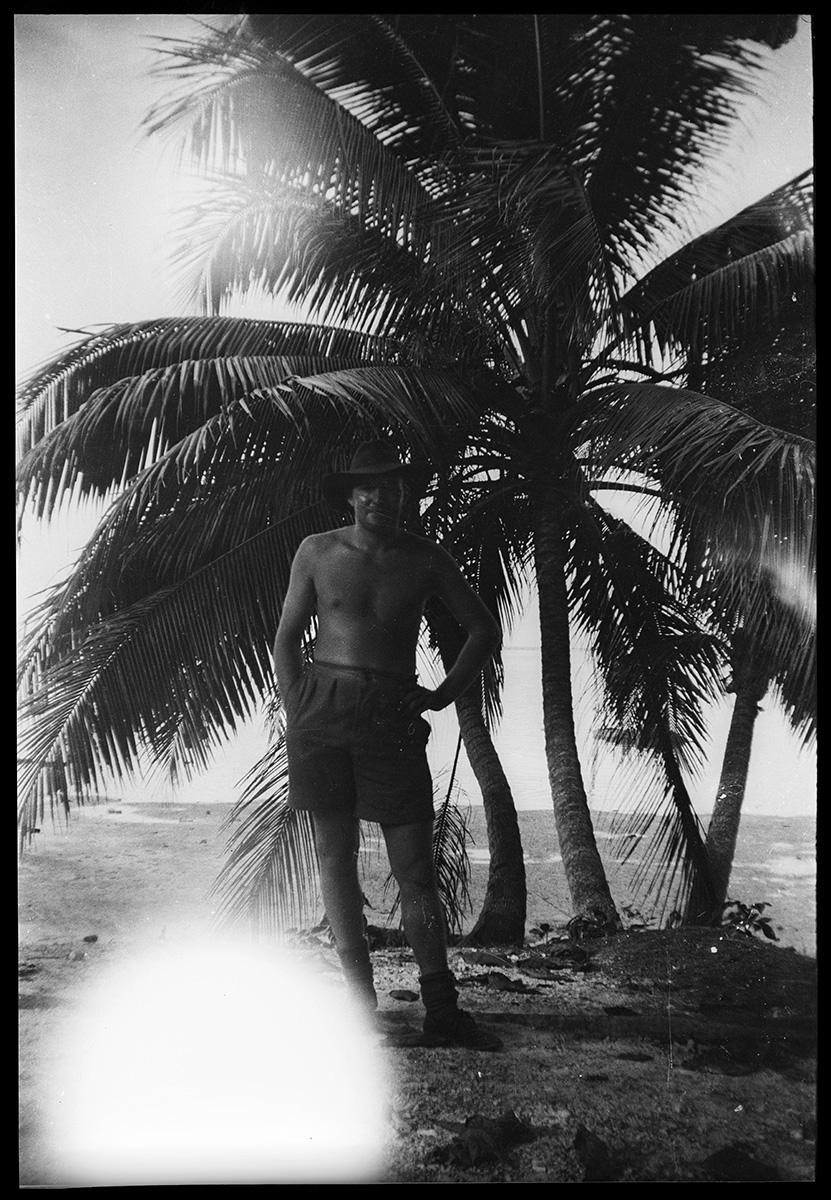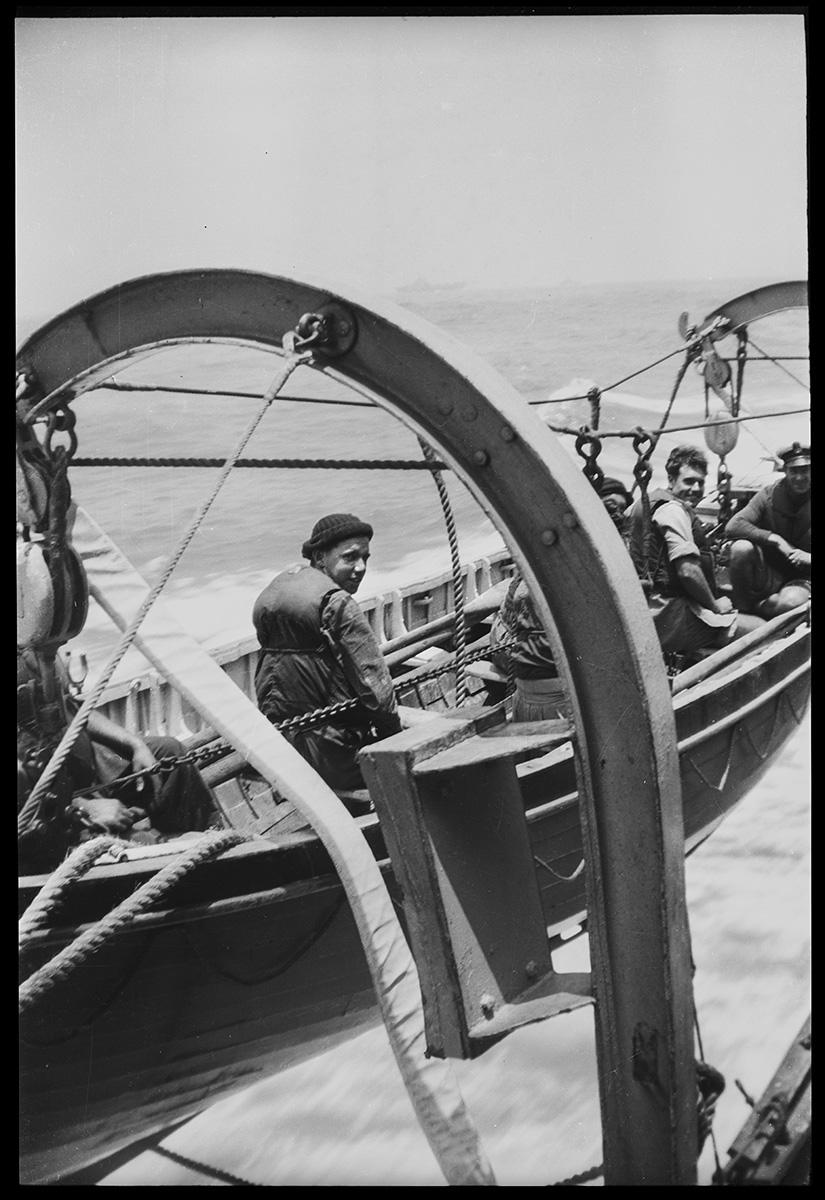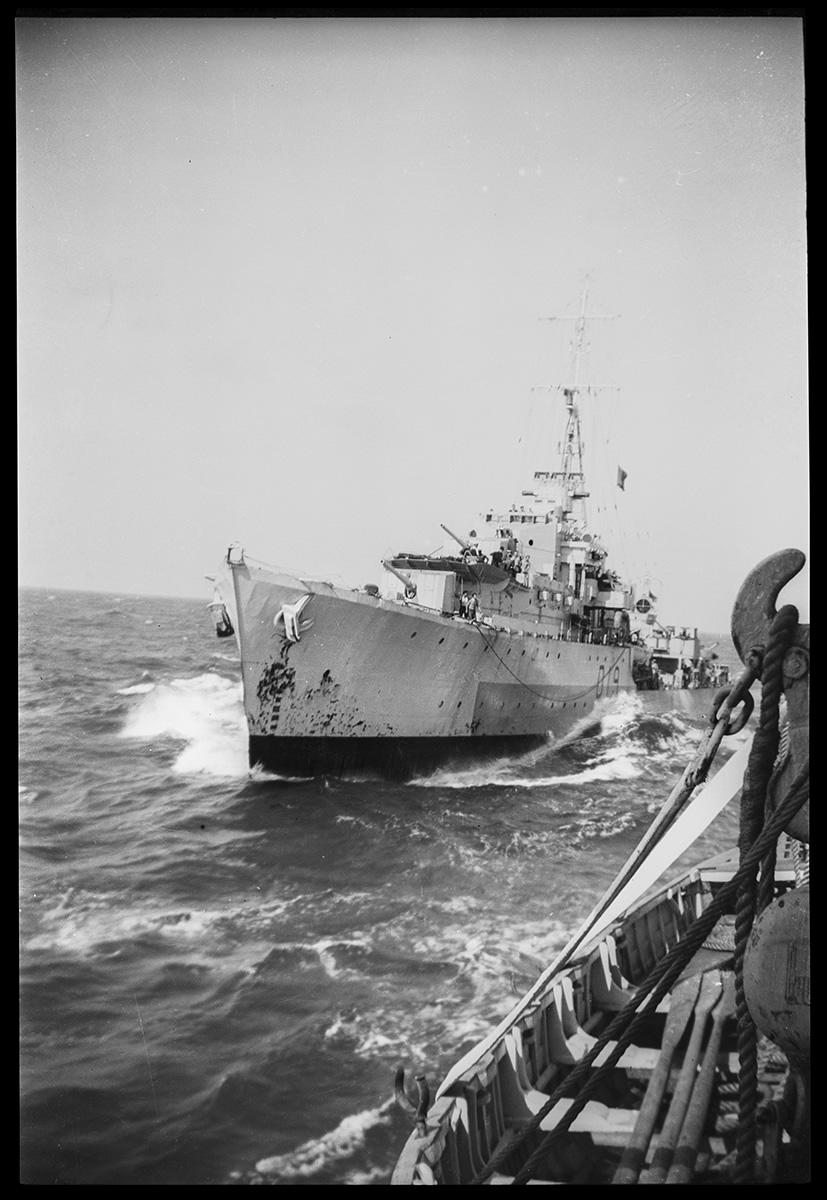
The Battle of the Atlantic, Arctic convoys, and fighting Japanese kamikazes in the Pacific
The Battle of the Atlantic, Arctic convoys, and fighting Japanese kamikazes in the Pacific
As a consequence of naval reforms, Britain entered World War II with a fleet that was a mix of World War I ships and ships built during the interwar period because of the arms and displacement restrictions imposed. Although the strength of the British navy as a whole was impressive.
By the beginning of the war the Royal Navy had: 15 battleships and battlecruisers (5 more were under construction), 7 aircraft carriers (5 under construction), 66 cruisers (23 under construction), 184 destroyers (52 under construction), and 60 submarines. In comparison, the German Navy had 2 battleships and 6 cruisers (6 more under construction), 21 destroyers, no aircraft carriers (2 under construction) and 57 submarines. The number of Royal Navy personnel on January 1, 1939 was less than 10,000 officers and about 109,000 sailors, also 12,400 officers and soldiers were in the Royal Navy. At the beginning of the war the total number of personnel reached 134,000.
From the very beginning of the war the Royal Navy was engaged in providing for the evacuation of British troops from continental Europe, and throughout the war it participated in the so-called Battle of the Atlantic. In the fall of 1939 it suffered its first losses: in September the aircraft carrier HMS "Courageous" was sunk after an attack by the U-29 German submarine, and in October the battleship "Royal Oak" was torpedoed by the submarine U-47. The photographer at this time photographs the USS "Malcolm" (D19) which in September 1939 was the commander of the 16th Fleet of destroyers based at Portsmouth and involved in anti-submarine patrols of the English Channel and the Southwest approaches. (His number was changed from D19 to I19 in May 1940.)
The first major battle of the fleet took place December 13, 1939 at the mouth of the river La Plata in Argentina, when the German cruiser "Admiral Graf Spee" was completely blocked by the skillful actions of three British cruisers and misinformation - this was the first victory of the British.
In 1940 the course of the war against Germany was unfavorable for the Royal Navy: during Operation "Alphabet" to evacuate troops from Norway the Navy lost the aircraft carrier Glorious and six destroyers, including Acasta and Ardent, 1207 personnel were lost. From May 26 to June 4, 1940, the USS Malcolm participated in the evacuation of Dunkirk, making eight voyages between Dunkirk and England. The ship's commander, Sir Thomas Halsey, was appointed Commander of the Order of Distinguished Service. During the evacuation of Dunkirk up to 7 thousands sailors died (about 338 thousands people were evacuated). The loss of Allied territories was a moral blow to the Great Britain.
In the spring of 1941 the fleet was engaged in covering the retreat of British troops from Crete, and even Admiral Cunningham considered such an operation risky and dangerous. Thirty thousand men were saved at the cost of three cruisers and six destroyers sunk during the fighting against the German forces. In May he conducted an operation to destroy the German battleship Bismarck, which involved several large British ships - the battleship Prince of Wales and the battlecruiser Hood, then the aircraft carrier Ark Royal and battleships King George V and Rodney. Bismarck was sunk with the assistance of naval aircraft and cruisers, but the victory came at too high a price - Hood was sunk during the first battle. For the British Navy the loss of the Hood was a very serious blow.
After the German invasion to the USSR, the British Navy assumed responsibility for guarding the Arctic convoys from Great Britain to Soviet ports-the first of which, codenamed the Dervish, left Liverpool port on 12 August and successfully arrived in Arkhangelsk on 31 August without being detected by German intelligence. At the end of 1941 Britain suffered a number of other losses: In November 13 "Ark Royal" was torpedoed by the German U-81 submarine and sunk on the following day, on November 25 Barham was sunk in the high seas by the U-331 (the explosion blew the ship apart), and on December 10 Prince of Wales and the battle cruiser Ripals were sunk by the Japanese aircraft (Japan at this time was already at war with Great Britain).
In 1942 the most important strategic mission of the British Navy was to fight enemy submarines to ensure the safe arrival of cargo to its destination (mostly in Soviet ports near the Arctic Ocean). To counter submarines the navy used cheap and quickly built sloops and corvettes, which proved quite effective against submarines. During the defense of the Arctic convoys the British Navy suffered heavy losses. On 3 February 1942 the USS Malcolm collided with the USS Burnham class. Neither ship was badly damaged, and both continued to perform their function of protecting the convoy. The aftermath of this collision was captured by the photographer already at the repair dock. A huge penetrating hole in the ship's hull in the area of the bow above the waterline. The light cruiser Edinburgh, carrying gold, was sunk on 2 May 1942 while guarding the QP-11 convoy from Murmansk to Reykjavik. The most serious loss was the loss of the PQ-17 convoy which was on its way to Murmansk in June-July. 22 transports and 2 auxiliary ships were sunk by Germans who lost only 6 planes during this operation. The destroyer Malcolm on September 7 was involved escorting the Arctic Convoy PQ 18 to the Soviet Union. The USS Malcolm was the leader of the direct escort. The convoy arrived in Arkhangelsk on September 21, 1942 after seven days of continuous fighting during which 13 ships were sunk, three submarines were destroyed and 40 aircraft were shot down.
In the North Sea the British continued to fight against German forces: on the eve of 1943, while guarding the JW-51B convoy, the British in the Barents Sea disrupted a Kriegsmarine attack, sinking one destroyer and losing a destroyer and a minesweeper. On December 26 near Cape Nordkapp the British sank the battleship Scharnhorst. By that time the British had realized the fact that it was aircraft carriers, not battleships, that began to play a major role in naval combat operations. The British were the first to propose armoring the decks of aircraft carriers and also decided to abandon the mass use of battleships and rely on aircraft carriers, taking advantage of U.S. experience.
In the 1944 Normandy Operation (specifically Operation Neptune, the British and Canadian navies engaged 958 warships out of a possible 1,213, and over 75% of all landing ships (4,000 total). The destroyer Undaunted (R53) - participated in the D-Day landing as part of Task Force G, covering the Roger section of Sword Beach. A large bay (or harbor) of Mulberry was established on the unequipped coast of Normandy, where transport ships arrived and unloaded personnel, military equipment, and supplies. In August 1944, another amphibious operation called "Dragoon" took place in the south of France. Since the Allies recaptured nearly all the major ports in Germany-occupied Europe, the Navy's role was limited to escorting convoys and providing fire support: for example, the British Navy assisted Canadian troops in the Battle of the Scheldt.
As the end of World War II in 1945 began to depend on the advance of U.S. and British ground forces from the west and the Soviet Union's Red Army and its new allies from the east, Britain's Eastern Fleet was relocated to East Africa to prevent the Japanese from breaking into the Indian Ocean and to prevent them from waging unrestricted submarine warfare. The British Pacific Fleet fought the war against Japan. In 1945, a total of 84 large and small ships went to the Pacific, becoming the largest contingent of the British Navy overseas. The photographer also takes pictures during this period while on different ships: the USS Intrepid (R53), the USS Malcolm and the aircraft carrier USS Indefatigable (R10). The major successes of the British Navy in the Pacific theater were the attack on the oil fields of Sumatra called Operation Lentil, which cut off the supply of fuel to the Japanese, and covering the landing of U.S. troops in Okinawa, where the April 1, 1945 attack by Japanese kamikaze aircraft on British ships, which resulted in severe damage to the aircraft carrier Indefatigable (R10). The photographer was on the aircraft carrier USS Indefatigable (R10) during the oil field attack and filmed a briefing of the pilots of the Supermarine Seafire L. Mk. III deck fighters of 887 Squadron before a combat flight. The planes stood on deck ready to take off with outboard tanks that enabled them to fly long distances to destroy targets. The British were ready to take part in Operation Downfall, a landing on the coast of the Japanese islands, but the atomic bombing of Hiroshima and Nagasaki and the entry of the USSR into the war against Japan eliminated the need for an invasion from the sea as such, and at the same time brought the end of the war closer.

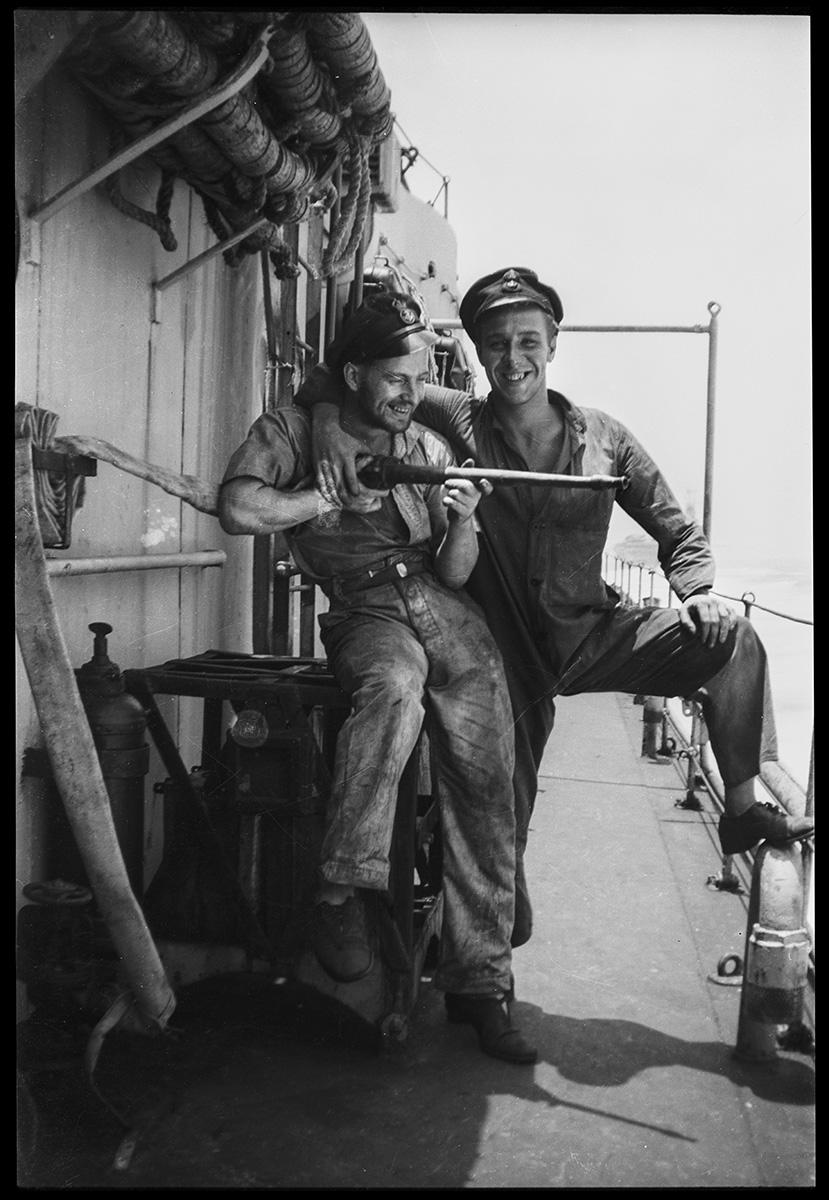
Portrait of British sailors on a destroyer. Pacific Ocean. 1945.
Portrait of British sailors on a destroyer. Pacific Ocean. 1945.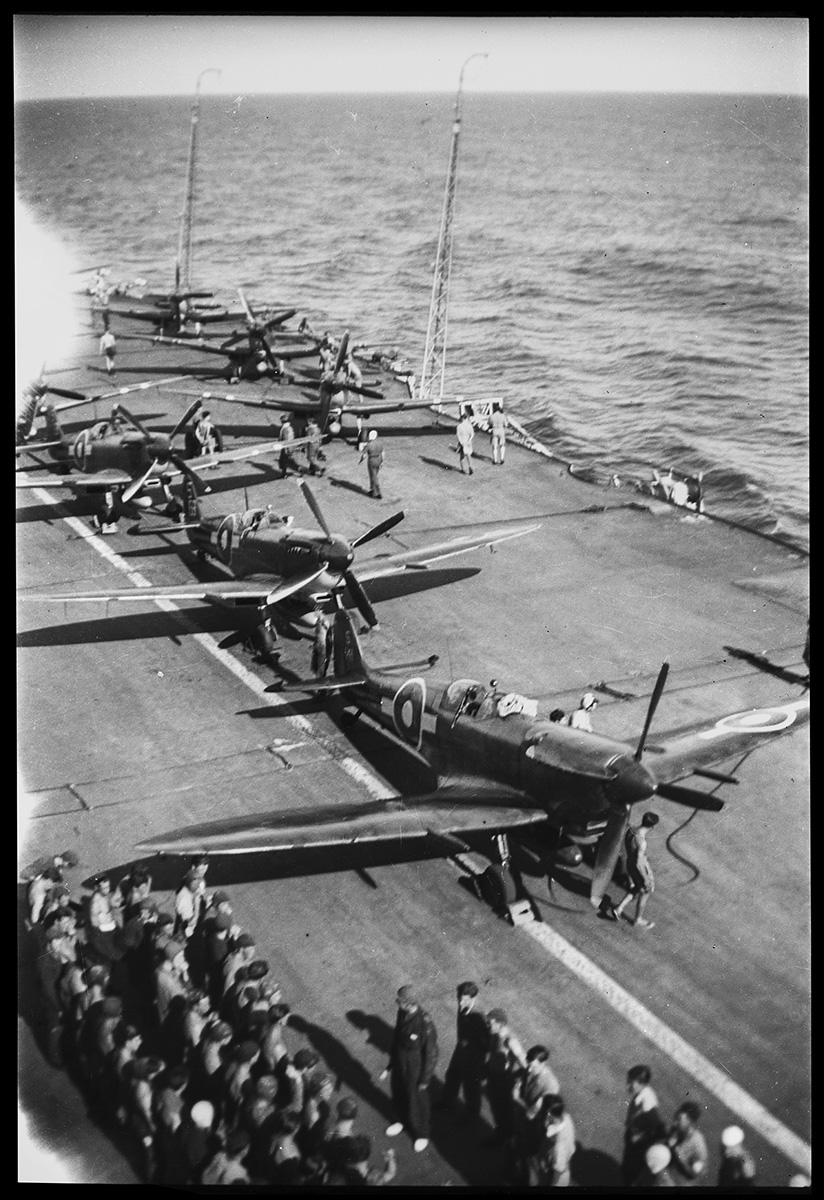
Briefing of Supermarine Seafire L. Mk. III 887 Squadron deck fighter pilots before a combat flight from the aircraft carrier - HMS Indefatigable (R10). Sumatra, Indonesia. January 1945.
Briefing of Supermarine Seafire L. Mk. III 887 Squadron deck fighter pilots before a combat flight from the aircraft carrier - HMS Indefatigable (R10). Sumatra, Indonesia. January 1945.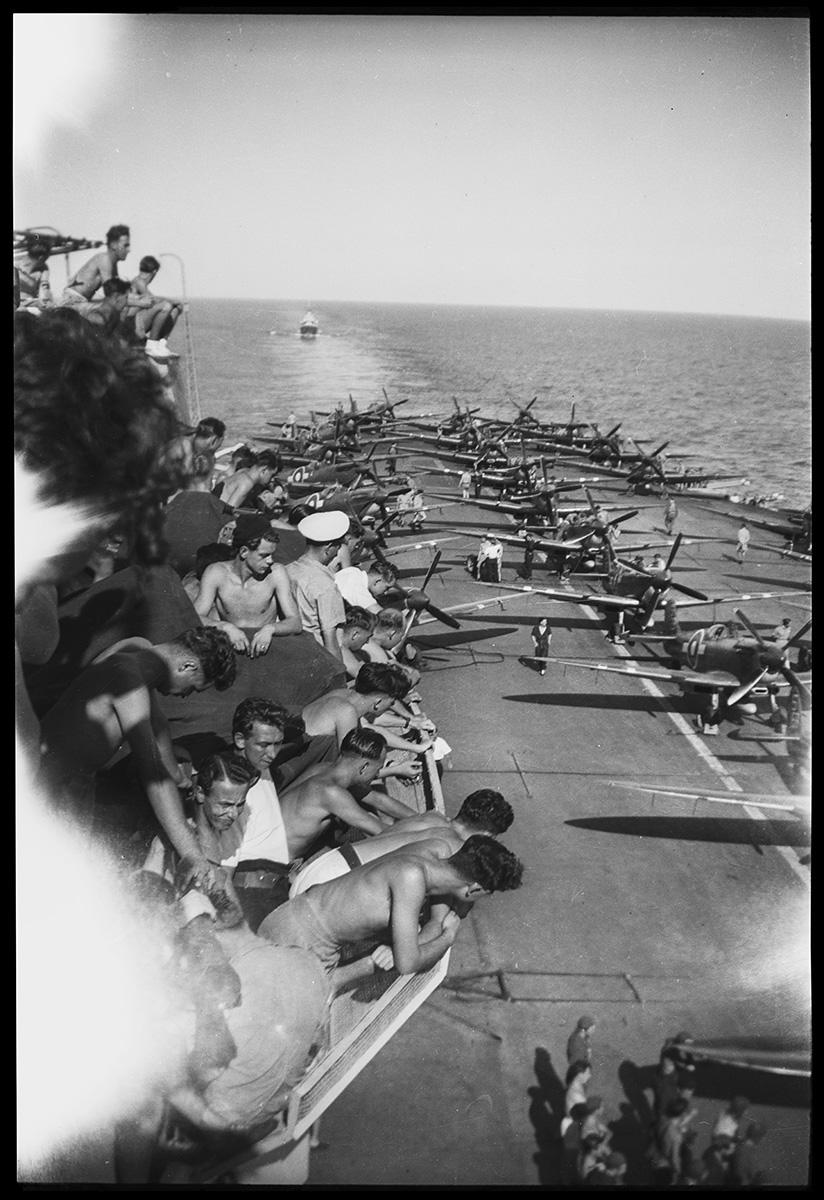
Sailors watch the pilot briefing and training of Supermarine Seafire L. Mk. III 887 Squadron deck fighters before a combat flight from the aircraft carrier, HMS Indefatigable (R10). Sumatra, Indonesia. January 1945.
Sailors watch the pilot briefing and training of Supermarine Seafire L. Mk. III 887 Squadron deck fighters before a combat flight from the aircraft carrier, HMS Indefatigable (R10). Sumatra, Indonesia. January 1945.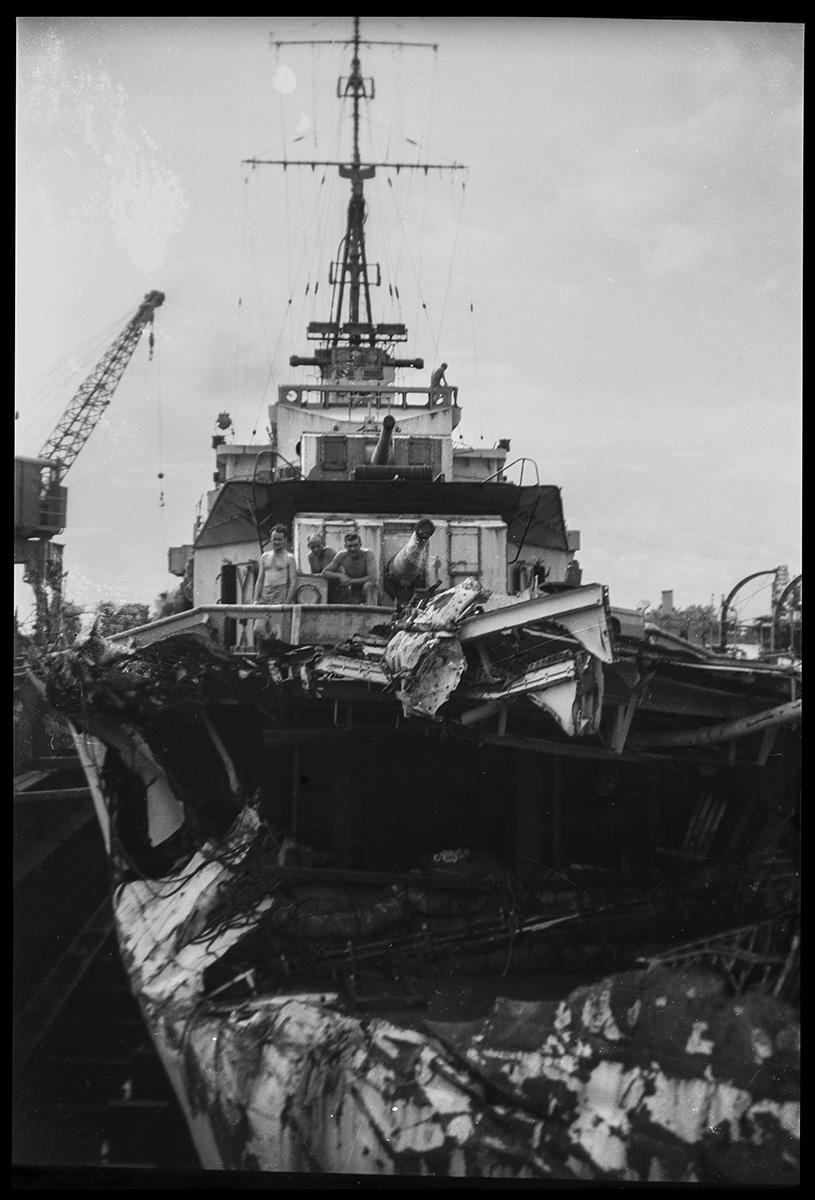
HMS Malcolm (D19), which collided with a Burnham-class destroyer during a convoy. At this time the destroyer HMS Malcolm / Malcolm (D19) was engaged in escorting ships mainly to Soviet ports by the Arctic Ocean. 1942-43.
HMS Malcolm (D19), which collided with a Burnham-class destroyer during a convoy. At this time the destroyer HMS Malcolm / Malcolm (D19) was engaged in escorting ships mainly to Soviet ports by the Arctic Ocean. 1942-43.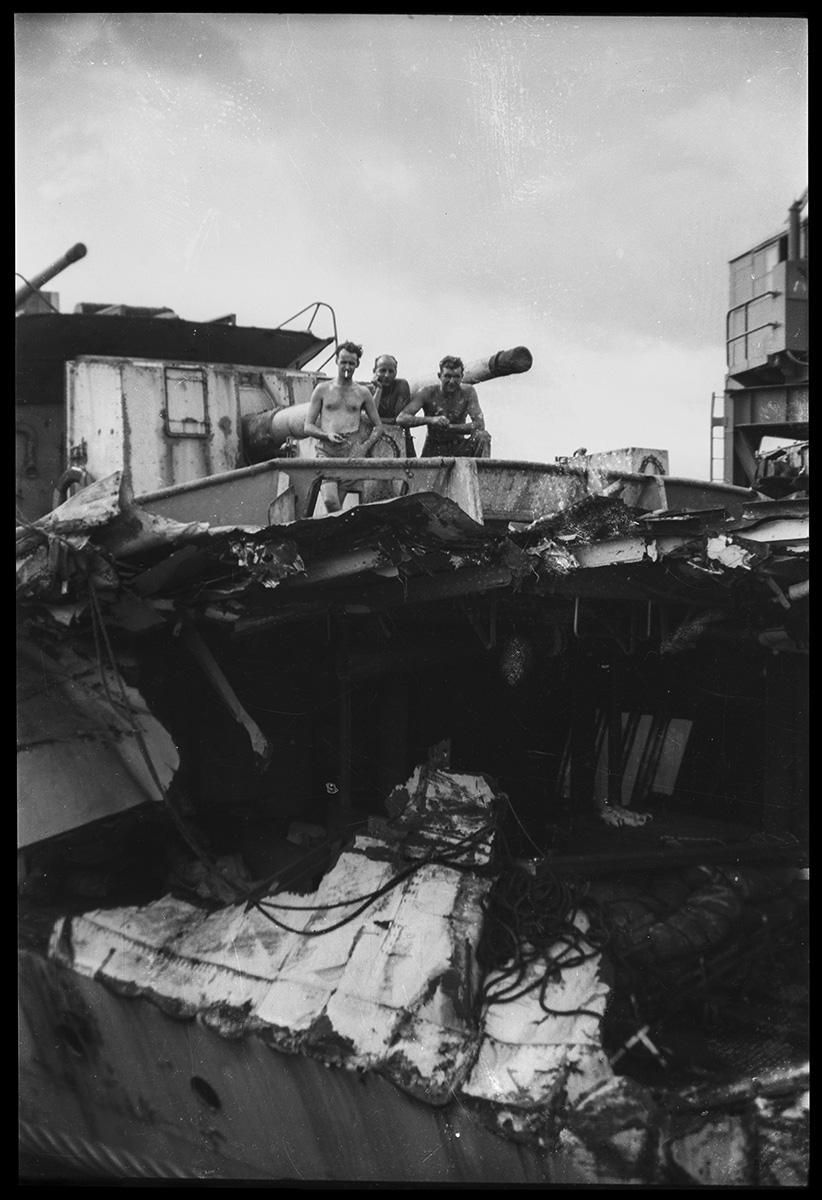
HMS Malcolm (D19), which collided with a Burnham-class destroyer during a convoy. At this time the destroyer HMS Malcolm / Malcolm (D19) was engaged in escorting ships mainly to Soviet ports by the Arctic Ocean. 1942-43.
HMS Malcolm (D19), which collided with a Burnham-class destroyer during a convoy. At this time the destroyer HMS Malcolm / Malcolm (D19) was engaged in escorting ships mainly to Soviet ports by the Arctic Ocean. 1942-43.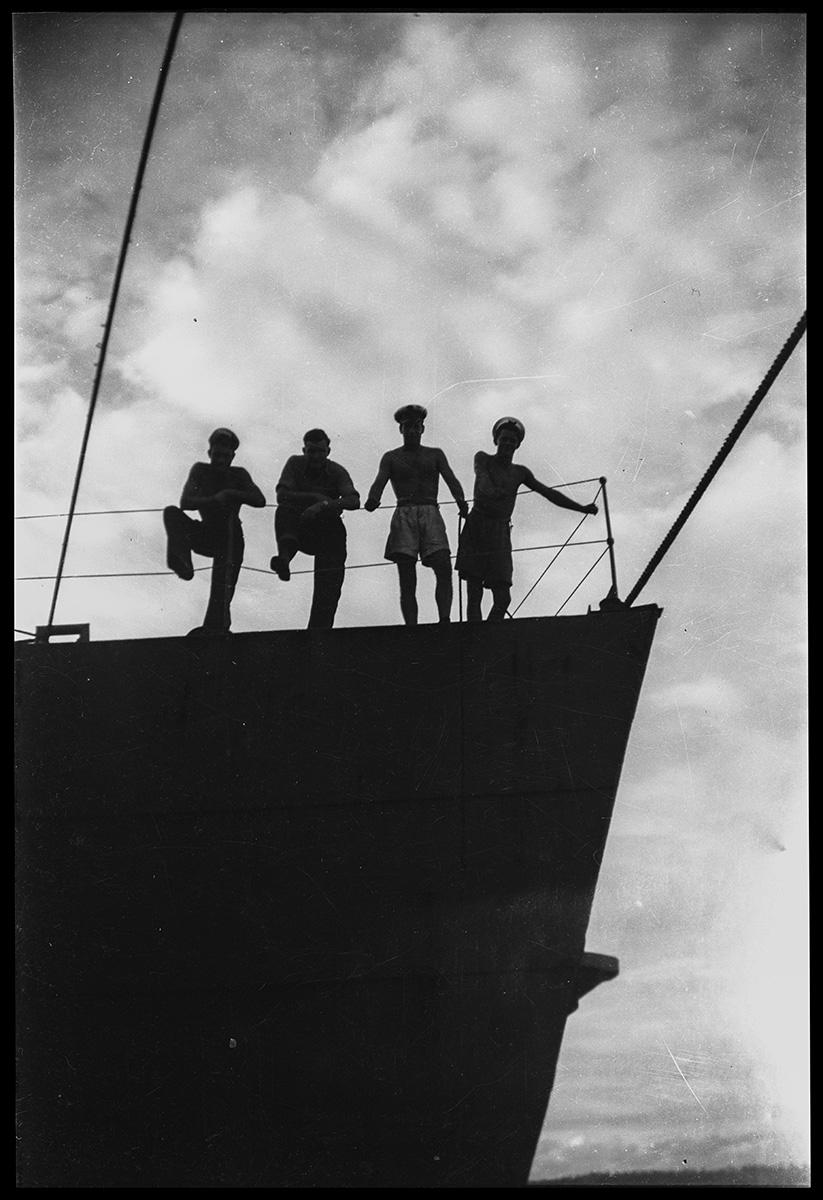
Sailors on the nose of a British destroyer. 1944-45.
Sailors on the nose of a British destroyer. 1944-45.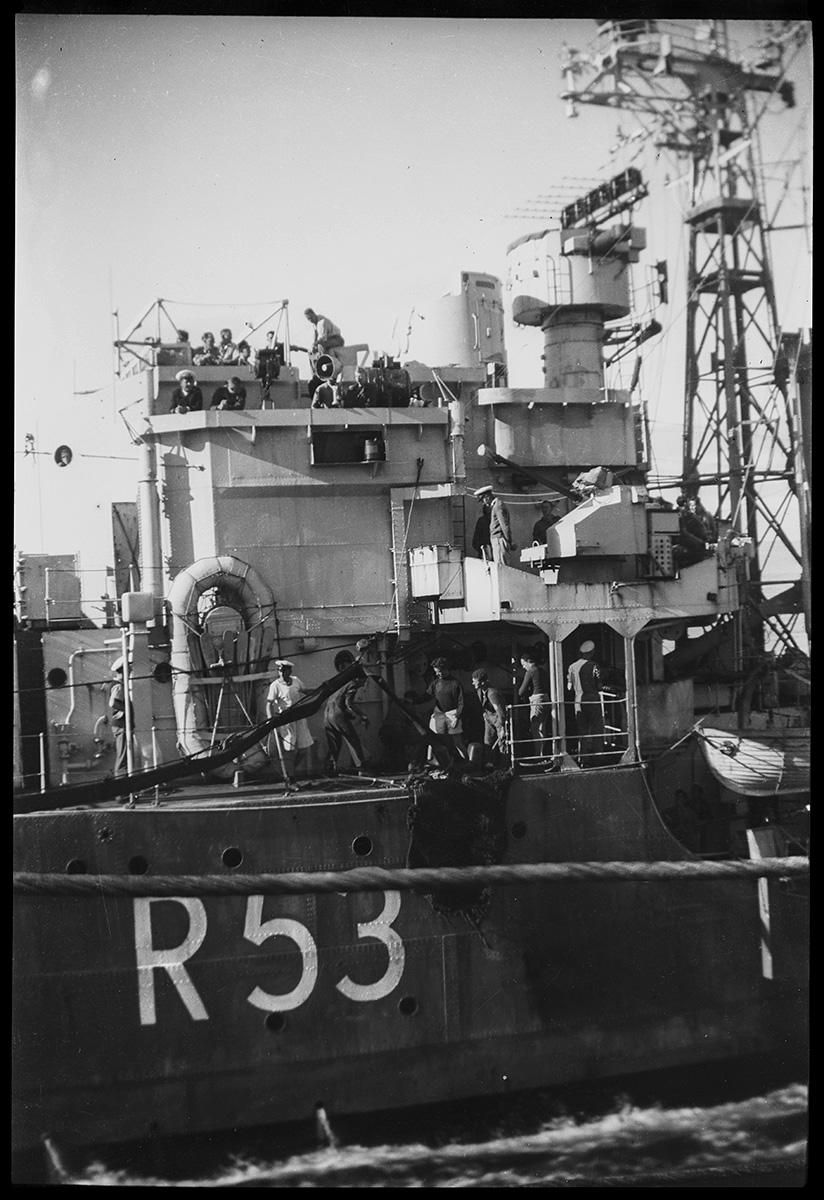
The destroyer HMS Undaunted (R53) in the Pacific Ocean. 1945.
The destroyer HMS Undaunted (R53) in the Pacific Ocean. 1945.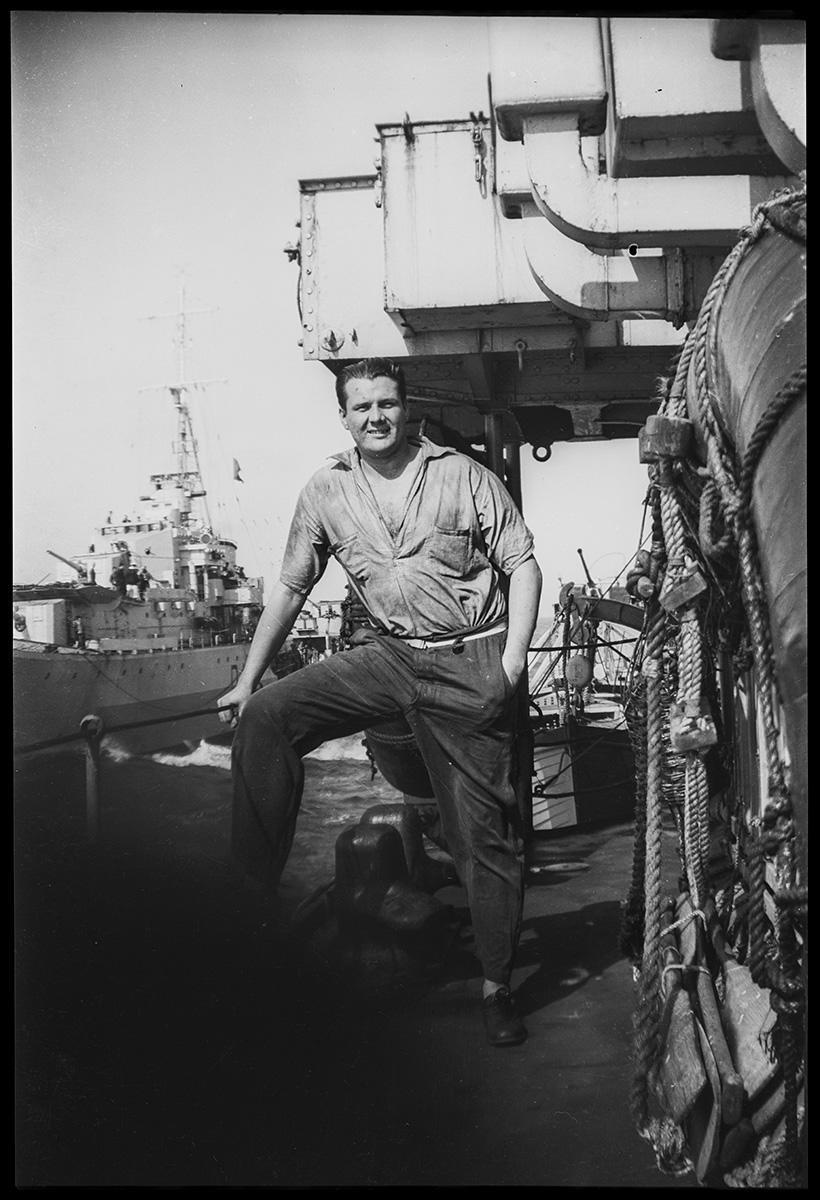
Portrait of a British sailor on the deck of a destroyer in the Pacific ocean. Nearby follows the destroyer HMS Malcolm (D19). 1945.
Portrait of a British sailor on the deck of a destroyer in the Pacific ocean. Nearby follows the destroyer HMS Malcolm (D19). 1945.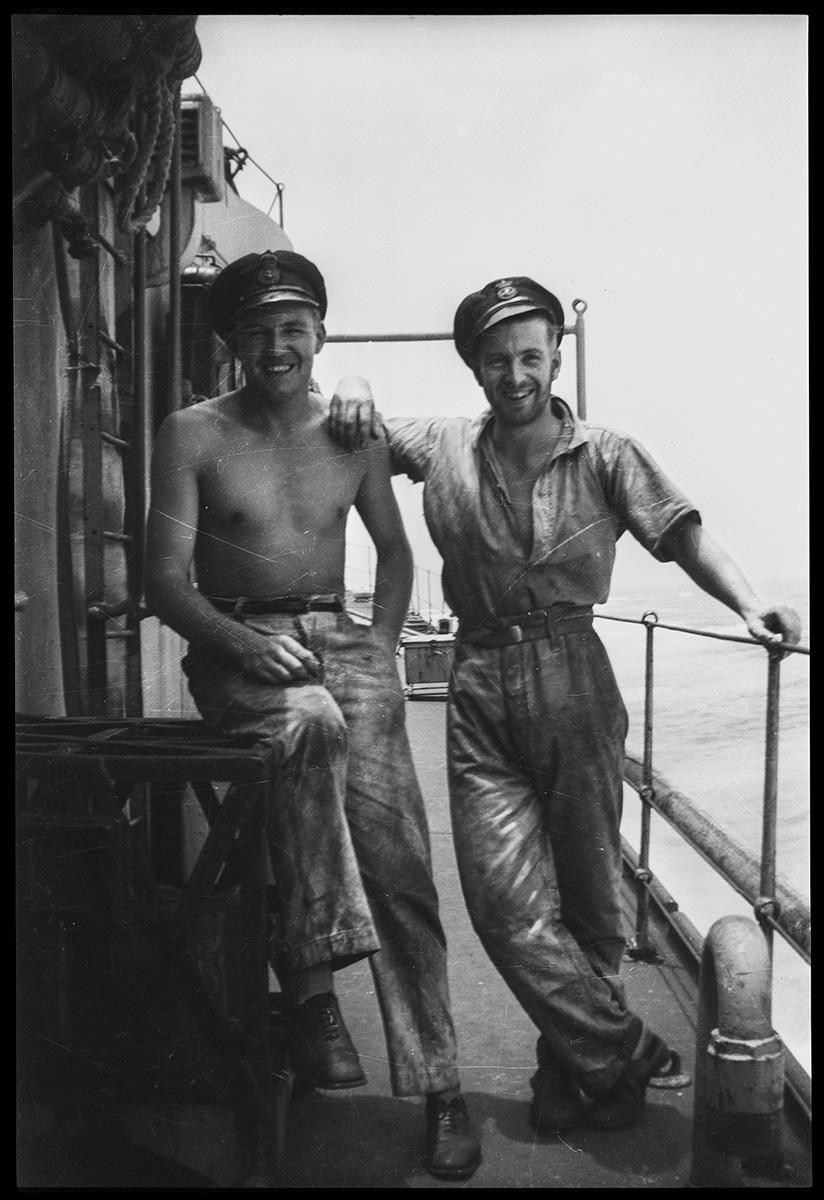
Portrait of British sailors on the deck of a destroyer in the Pacific. 1945.
Portrait of British sailors on the deck of a destroyer in the Pacific. 1945.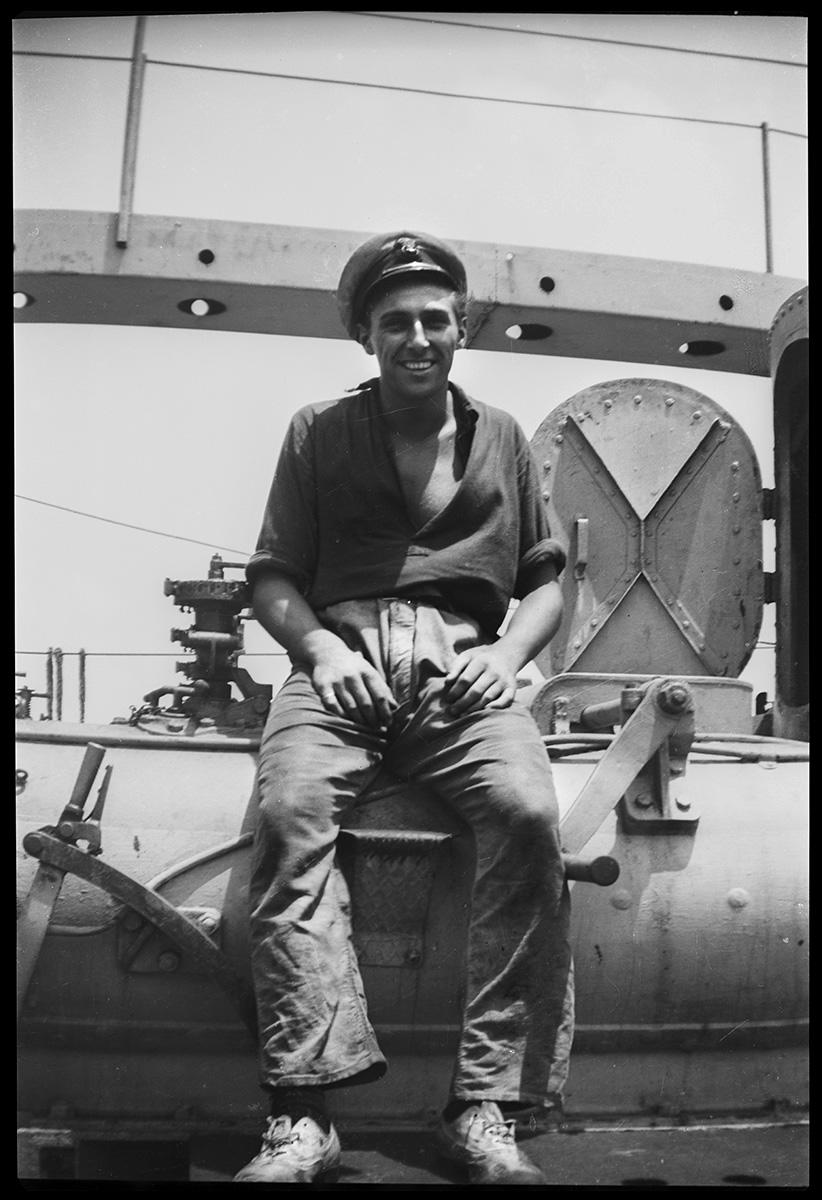
Portrait of a British sailor on the deck of a destroyer in the Pacific. 1945.
Portrait of a British sailor on the deck of a destroyer in the Pacific. 1945.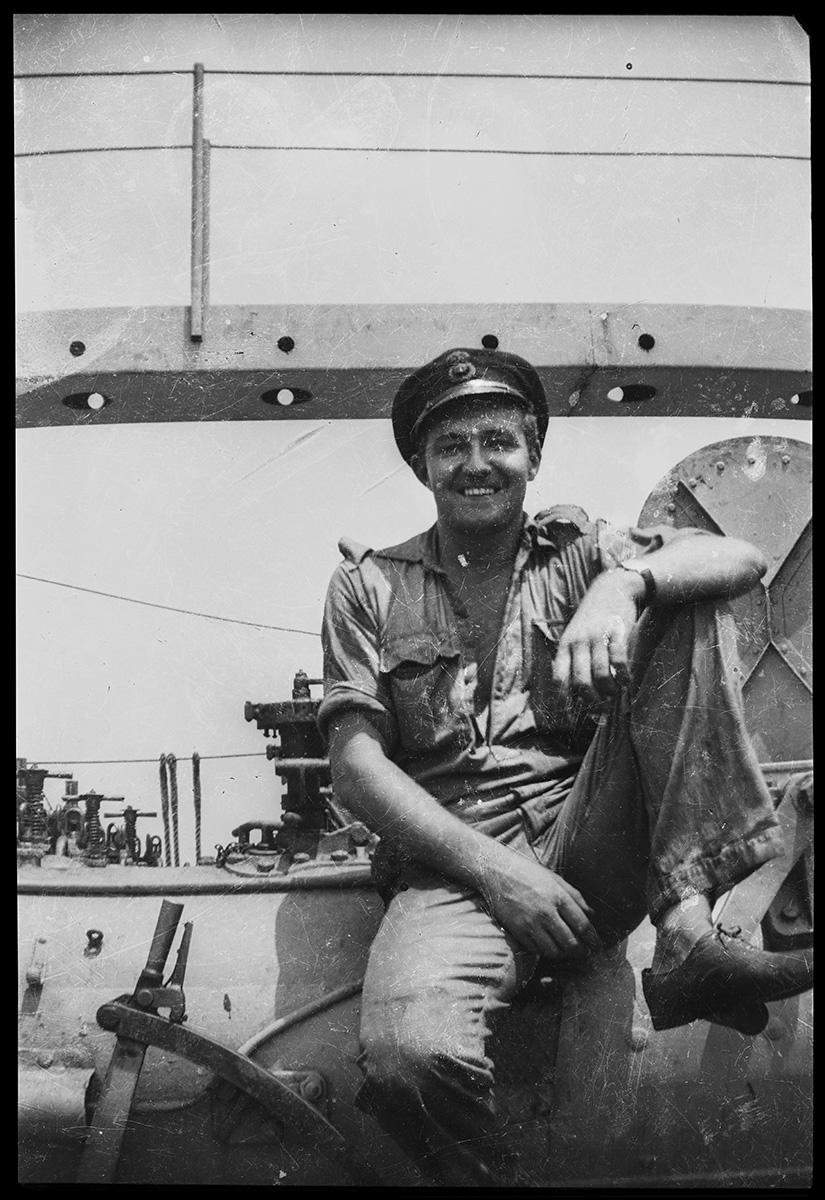
Portrait of a British sailor on the deck of a destroyer in the Pacific. 1945.
Portrait of a British sailor on the deck of a destroyer in the Pacific. 1945.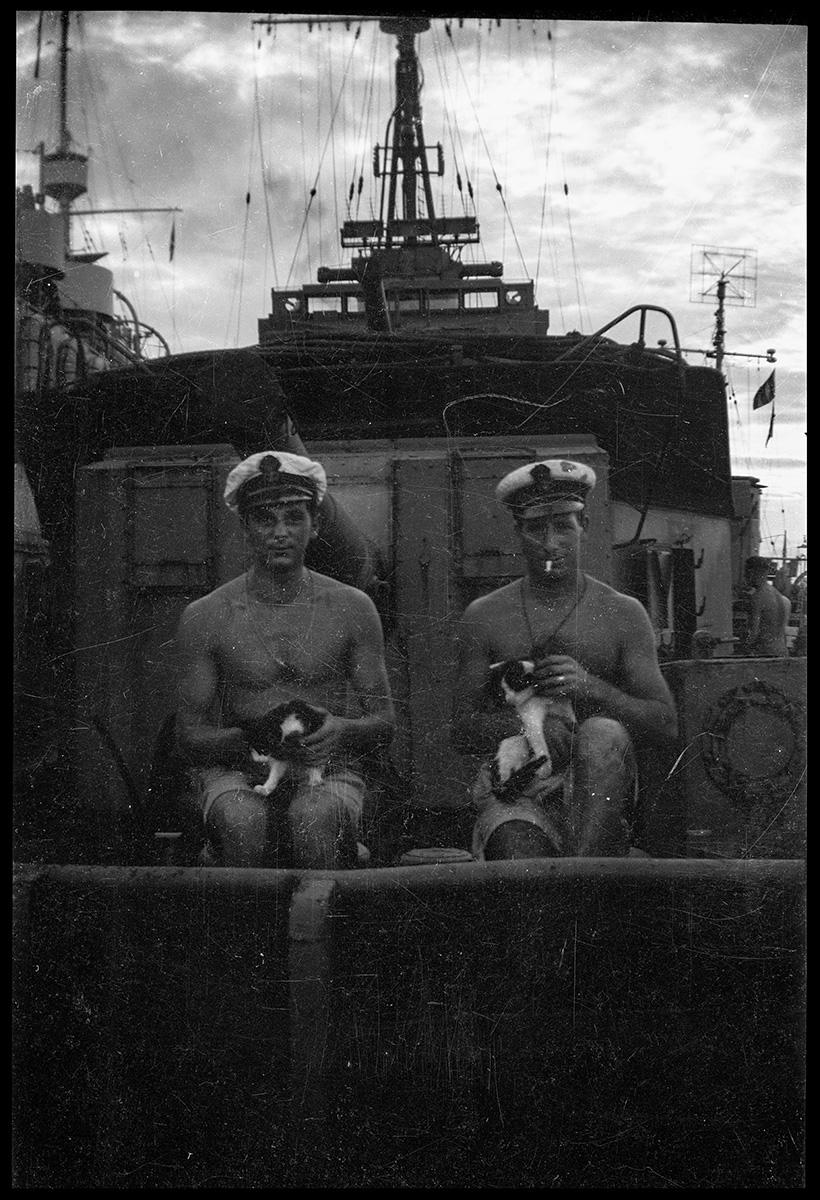
Portrait of British sailors with shipboard cats on the deck of a destroyer. Cats were actually considered members of the crew. 1944-1945.
Portrait of British sailors with shipboard cats on the deck of a destroyer. Cats were actually considered members of the crew. 1944-1945.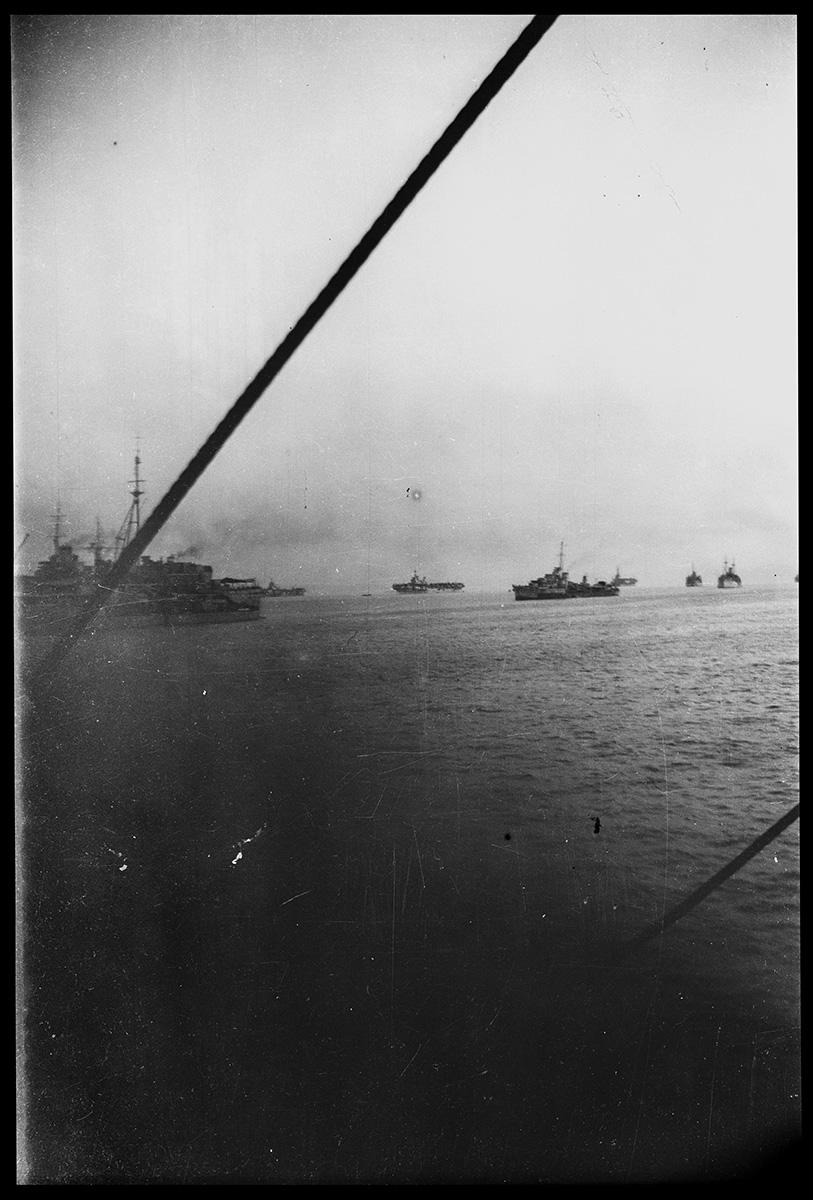
The British Pacific Fleet. 84 large and small ships went to the Pacific, becoming the largest grouping of the British Navy overseas. 1945.
The British Pacific Fleet. 84 large and small ships went to the Pacific, becoming the largest grouping of the British Navy overseas. 1945.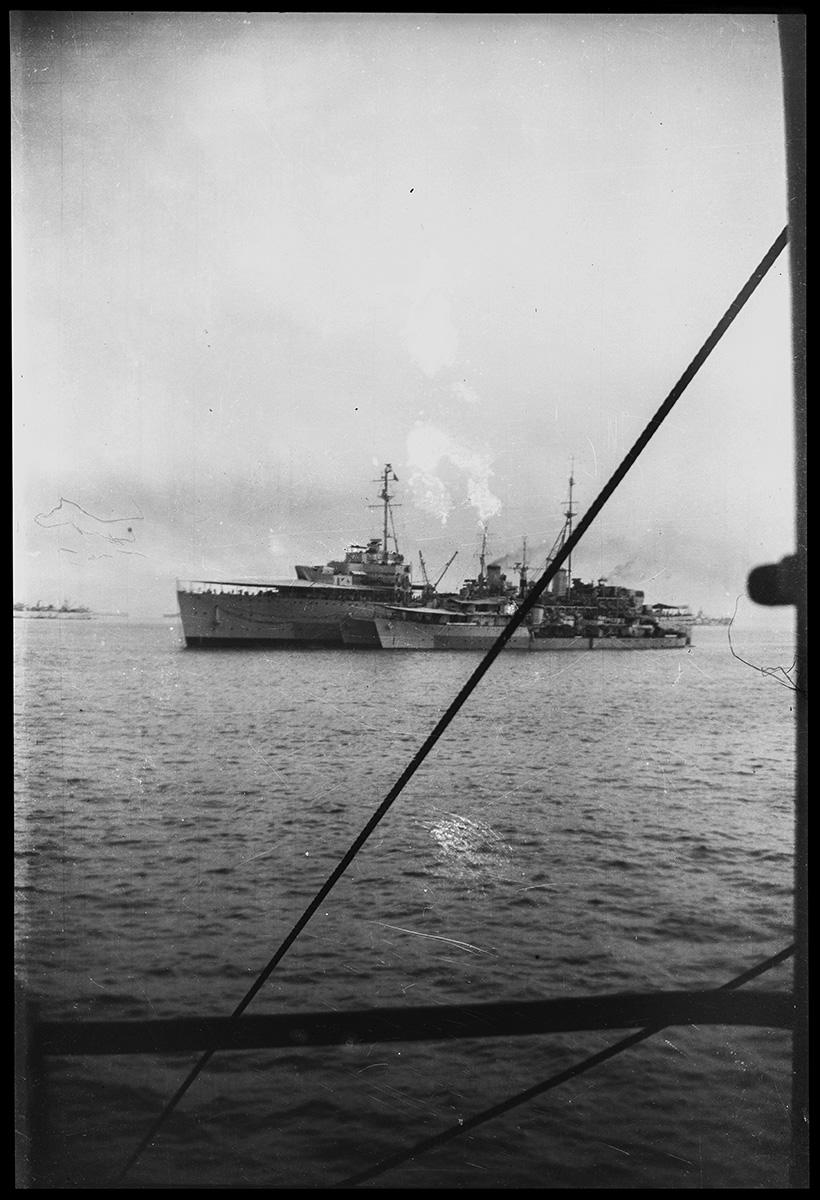
The British Pacific Fleet. 84 large and small ships went to the Pacific, becoming the largest grouping of the British Navy overseas. 1945.
The British Pacific Fleet. 84 large and small ships went to the Pacific, becoming the largest grouping of the British Navy overseas. 1945.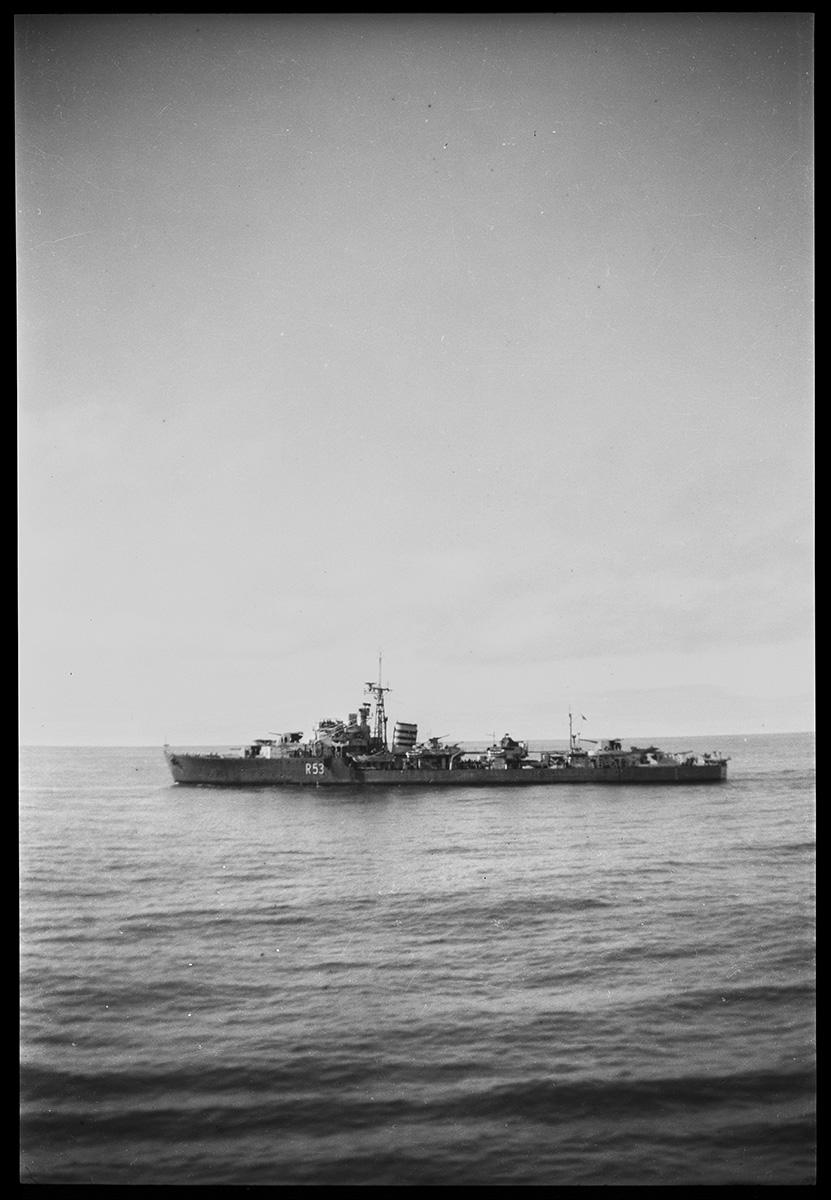
The destroyer HMS Undaunted (R53). Undaunted had a long and distinguished career after being accepted into the Navy in 1944. He was also involved during the Allied landings in Normandy on D-Day. 1944-45.
The destroyer HMS Undaunted (R53). Undaunted had a long and distinguished career after being accepted into the Navy in 1944. He was also involved during the Allied landings in Normandy on D-Day. 1944-45.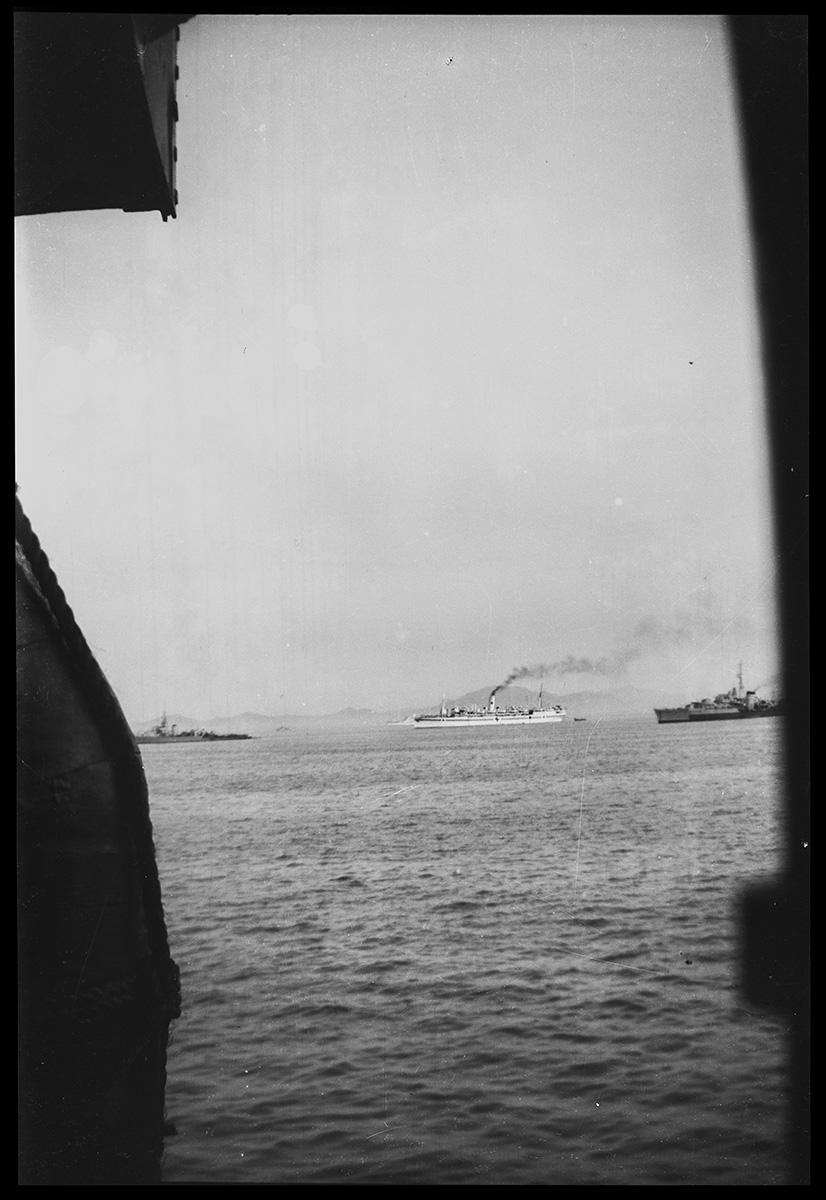
A convoy of ships at sea, including a hospital ship, a white ship with the Red Cross. 1944-45.
A convoy of ships at sea, including a hospital ship, a white ship with the Red Cross. 1944-45.
HMS Lewes (G-68) is the former USS Craven (DD-70). Transferred to Great Britain, October 23, 1940. During the Pacific campaign it was used as a target for deck aviation practice. 1945.
HMS Lewes (G-68) is the former USS Craven (DD-70). Transferred to Great Britain, October 23, 1940. During the Pacific campaign it was used as a target for deck aviation practice. 1945.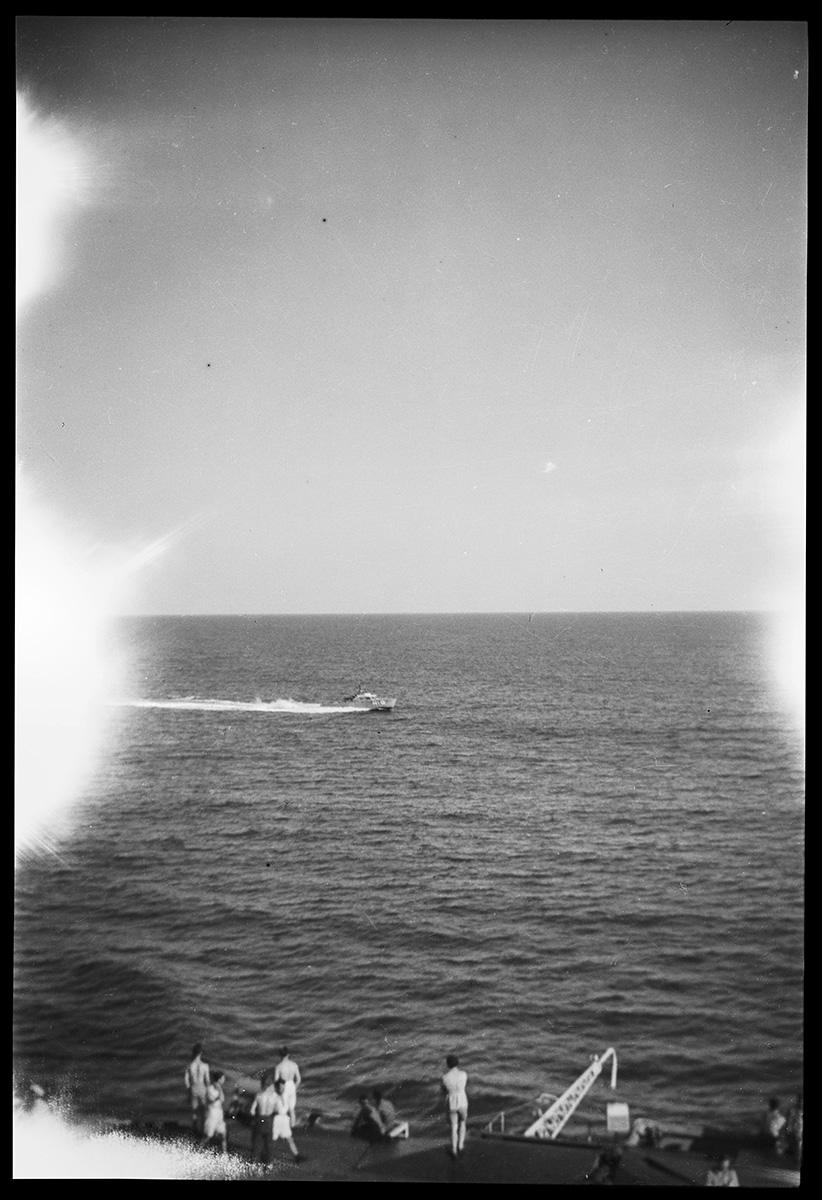
A patrol boat sails alongside the aircraft carrier HMS Indefatigable (R10). Sumatra, Indonesia. January 1945.
A patrol boat sails alongside the aircraft carrier HMS Indefatigable (R10). Sumatra, Indonesia. January 1945.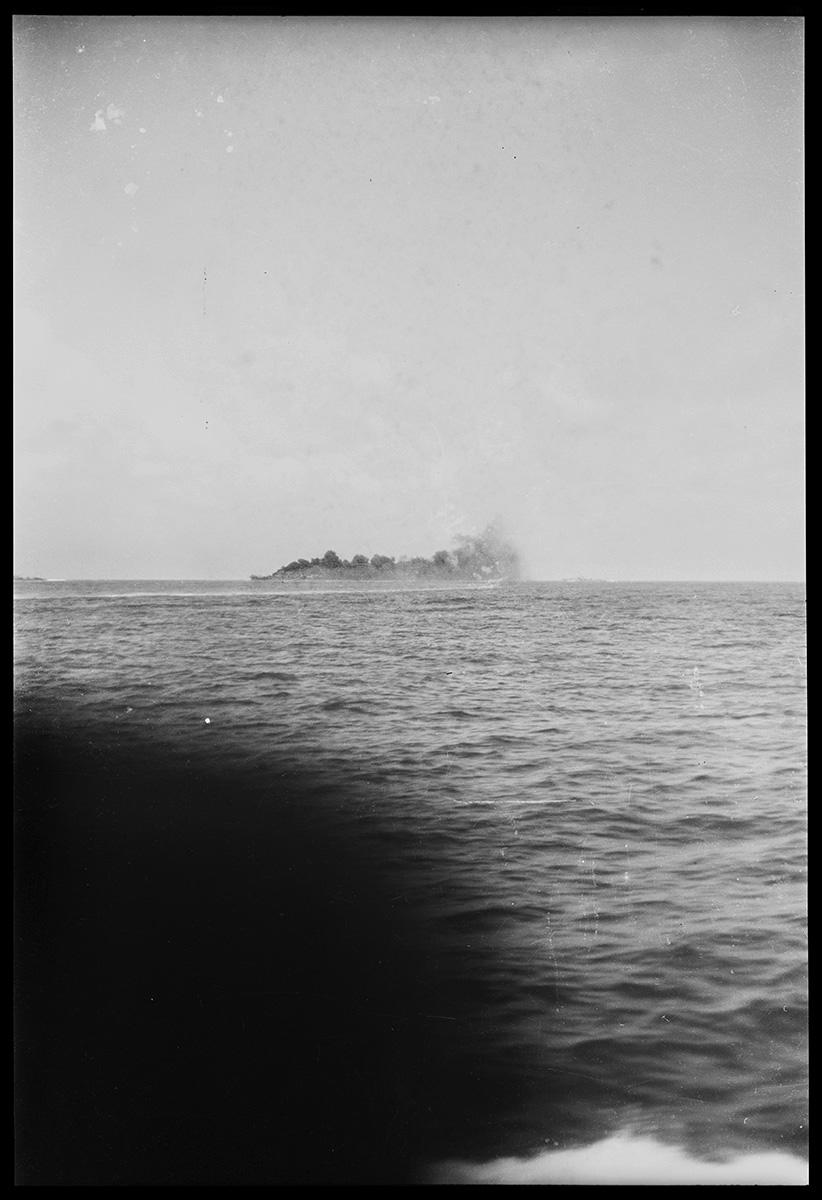
HMS Indefatigable / Indefatigable (R10) burns as a result of an attack by Japanese kamikaze planes. Okinawa, Japan. April 1, 1945.
HMS Indefatigable / Indefatigable (R10) burns as a result of an attack by Japanese kamikaze planes. Okinawa, Japan. April 1, 1945.